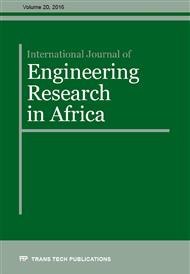p.130
p.144
p.161
p.177
p.195
p.202
p.218
p.235
p.248
Performance Analysis of Wavelet Packet Transform Based De-Noising Receiver for Visible Light Communication by Using Single Source
Abstract:
In this paper, wavelet packet transform (WPT) based de-noising receiver for visible-light communication (VLC) using a white light-emitting diode (LED) is studied for indoor applications such as short distance wireless connectivity, optical wireless local area network, and optical wireless input / output control devise (remote control). Previously, reported discrete wavelet transform based de-noising for indoor optical wireless communication; here we considered wavelet packet transform based de-noising technique. The process starts with the evaluation of the performance of de-noising receiver by calculating the received optical power, signal noise ratio (SNR), path loss and bit error rate (BER). Throughout the simulation results, the SNR performance is inversely proportional to the distance. Analytical study of SNR for VLC system without de-noising for indoor applications has been studied. In this paper de-noising technique is considered for reduction of noise. The DWPT based de-noising receiver, with a single source improves the SNR performance approximately by 2% compared to the one without de-noising receiver.
Info:
Periodical:
Pages:
195-201
Citation:
Online since:
October 2015
Authors:
Price:
Сopyright:
© 2016 Trans Tech Publications Ltd. All Rights Reserved
Share:
Citation:


